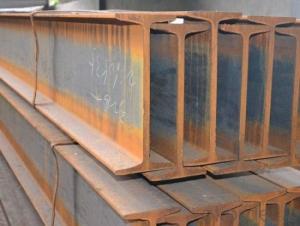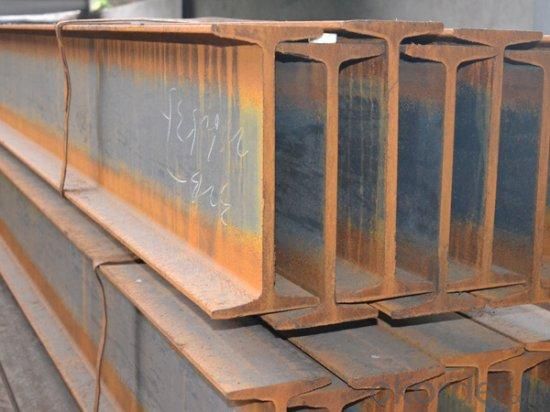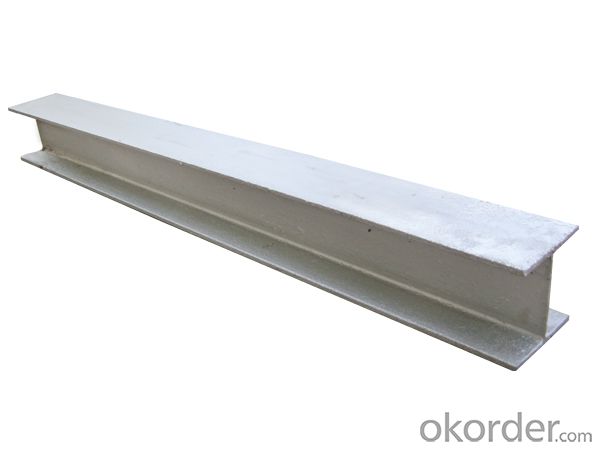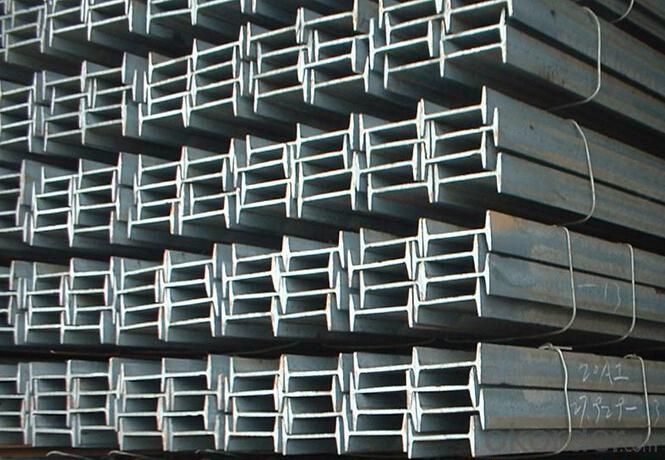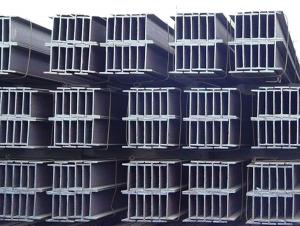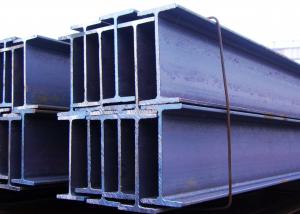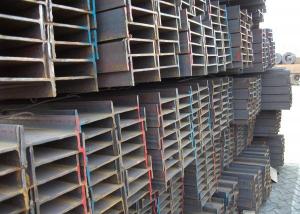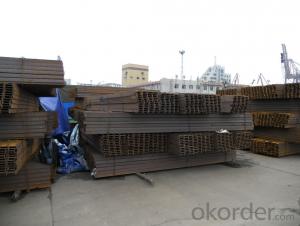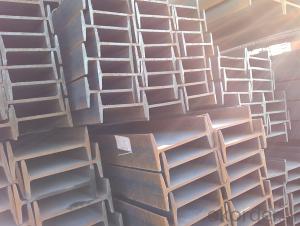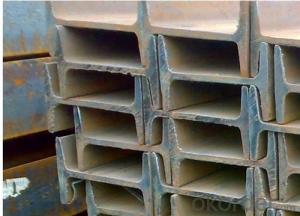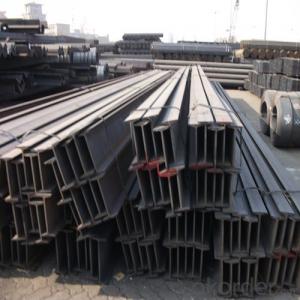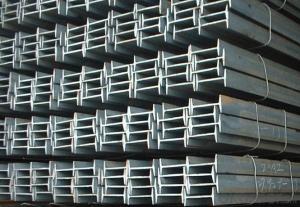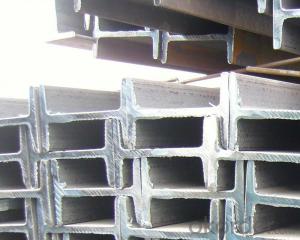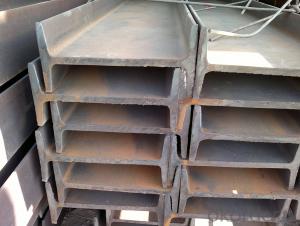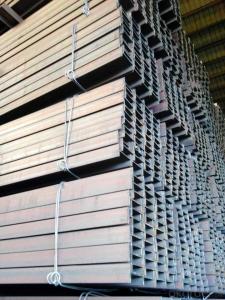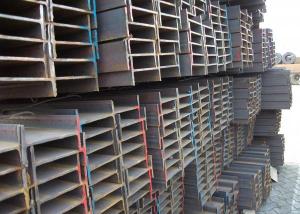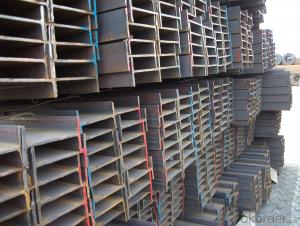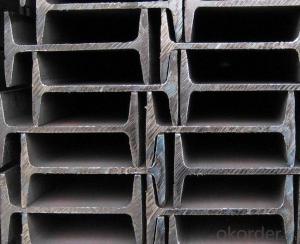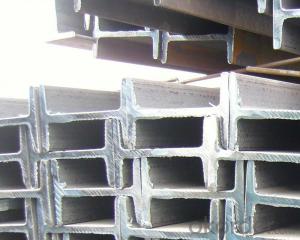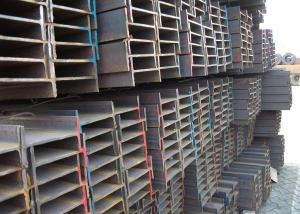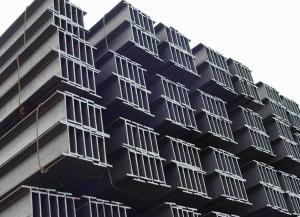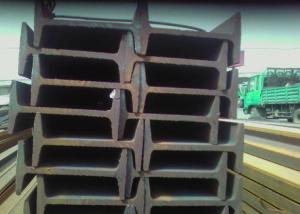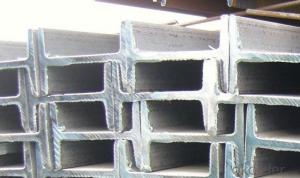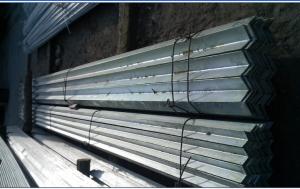IPEAA 100 stainless steel I-Beam for construction EN10025
- Loading Port:
- Tianjin
- Payment Terms:
- TT or LC
- Min Order Qty:
- 25 m.t.
- Supply Capability:
- 100000 m.t./month
OKorder Service Pledge
OKorder Financial Service
You Might Also Like
Product Description:
OKorder is offering IPEAA 100 stainless steel I-Beam for construction EN10025 at great prices with worldwide shipping. Our supplier is a world-class manufacturer of steel, with our products utilized the world over. OKorder annually supplies products to European, North American and Asian markets. We provide quotations within 24 hours of receiving an inquiry and guarantee competitive prices.
Product Applications:
IPEAA 100 stainless steel I-Beam are ideal for structural applications and are widely used in the construction of buildings and bridges, and the manufacturing, petrochemical, and transportation industries.
Product Advantages:
OKorder's Steel I-Beams are durable, strong, and resist corrosion.
Main Product Features:
· Premium quality
· Prompt delivery & seaworthy packing (30 days after receiving deposit)
· Corrosion resistance
· Can be recycled and reused
· Mill test certification
· Professional Service
· Competitive pricing
Product Specifications:
Specifications
1. Invoicing on theoretical weight or actual weight as customer request
2. Standard: EN10025, GB Standard, ASTM
3. Grade: Q235B, Q345B, SS400, ASTM A36, S235JR, S275JR
4. Length: 5.8M, 6M, 9M, 12M as following table
5. Sizes: 80mm-270mm
Appications
1. Supporting members, most commonly in the house raising industry to strengthen timber bears under houses. Transmission line towers, etc
2. Prefabricated structure
3. Medium scale bridges
4. It is widely used in various building structures and engineering structures such as roof beams, bridges, transmission towers, hoisting machinery and transport machinery, ships, industrial furnaces, reaction tower, container frame and warehouse etc.
Package & Delivery
1. Packing: it is nude packed in bundles by steel wire rod
2. Bundle weight: not more than 3.5MT for bulk vessel; less than 3 MT for container load
3. Marks: Color marking: There will be color marking on both end of the bundle for the cargo delivered by bulk vessel. That makes it easily to distinguish at the destination port.
4. Tag mark: there will be tag mark tied up on the bundles. The information usually including supplier logo and name, product name, made in China, shipping marks and other information request by the customer.
If loading by container the marking is not needed, but we will prepare it as customer request.
5. Transportation: the goods are delivered by truck from mill to loading port, the maximum quantity can be loaded is around 40MTs by each truck. If the order quantity cannot reach the full truck loaded, the transportation cost per ton will be little higher than full load.
6. Delivery of IPE Beam: 30 days after getting L/C Original at sight or T/T in advance
Production flow
Material prepare (billet) —heat up—rough rolling—precision rolling—cooling—packing—storage and transportation
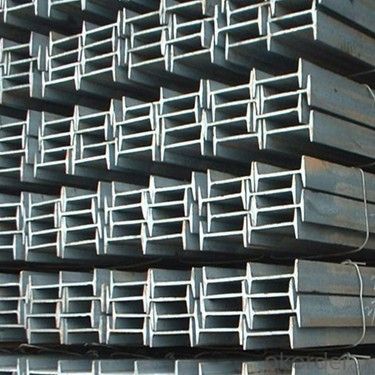
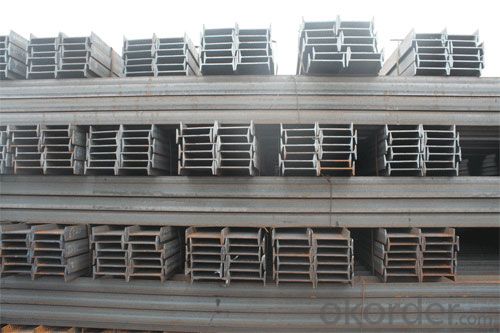
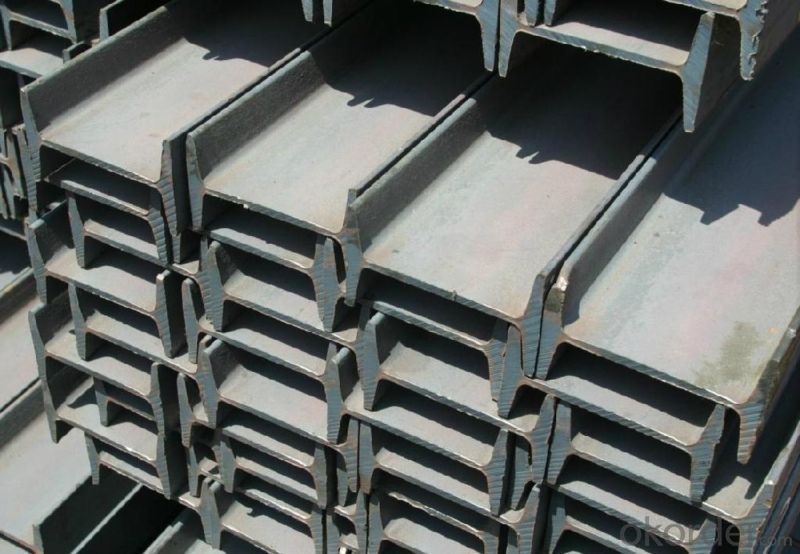
FAQ:
Q1: Why buy Materials & Equipment from OKorder.com?
A1: All products offered byOKorder.com are carefully selected from China's most reliable manufacturing enterprises. Through its ISO certifications, OKorder.com adheres to the highest standards and a commitment to supply chain safety and customer satisfaction.
Q2: How do we guarantee the quality of our products?
A2: We have established an advanced quality management system which conducts strict quality tests at every step, from raw materials to the final product. At the same time, we provide extensive follow-up service assurances as required.
- Q: Are steel I-beams affected by temperature fluctuations?
- Yes, steel I-beams are affected by temperature fluctuations. Steel expands when exposed to high temperatures and contracts when exposed to low temperatures. These temperature changes can cause the I-beams to expand or contract, leading to potential structural issues such as warping, buckling, or deflection. Therefore, it is important to consider and account for the effects of temperature fluctuations in the design and maintenance of steel I-beams.
- Q: Can Steel I-Beams be used for basement construction?
- Basement construction can indeed utilize steel I-beams. The strength and durability of steel I-beams make them a common choice in construction. In the case of basement construction, steel I-beams are frequently incorporated into the foundation system to bear the weight of the structure above. Particularly in basements, they offer great utility as they can span long distances without the need for additional support columns, enabling more open and flexible floor plans. Furthermore, steel I-beams are resistant to moisture and pests, making them ideal for basement construction where these factors may pose a concern. All in all, steel I-beams are a dependable and popular option for basement construction, owing to their structural integrity and ability to provide the necessary support for the building.
- Q: What is the maximum span for steel I-beams?
- The maximum span for steel I-beams depends on several factors, including the type and size of the I-beam, the load it needs to support, and the allowable deflection or sag. Generally, larger and stronger I-beams can span longer distances. For typical residential or commercial construction, the maximum span for steel I-beams can range from 20 feet to over 100 feet. However, it is important to consult with a structural engineer or an architect to determine the appropriate size and span for a specific application. Factors such as the building code requirements, the type of load (dead load, live load, wind load, etc.), and the desired level of deflection control will also influence the maximum span. It is crucial to ensure that the chosen steel I-beam can safely support the intended load without excessive deflection or structural failure. Therefore, it is best to consult with a professional who can analyze the specific project requirements and provide appropriate guidance on the maximum span for steel I-beams in a given situation.
- Q: The difference between I-beam and H steel is that a steel structure platform for cast iron machine should be designed. Cast iron captain 30 meters, every two meters with an upright column, which steel to choose?
- The I-beam wing plate size is smaller than H steel. The general structure of H steel beam column, I-beam, reason is the design of column not only bear the vertical downward force, but also bear a certain horizontal force, to increase stability of the structure in the horizontal direction. Beams generally withstand only vertical downward pressure.
- Q: Channel and I-beam are commonly used in construction sites. It is better to have on-site construction drawings, thank you
- The picture is not good, and the I-beam is generally used for erection of overhanging scaffold. Channel steel, it can be made of steel beams and steel staircase structure, but also can do wall keel
- Q: How do steel I-beams compare to fiberglass I-beams in terms of strength and durability?
- Steel I-beams are generally considered to be stronger and more durable than fiberglass I-beams. Steel is a much stronger material compared to fiberglass, which means that steel I-beams can bear heavier loads and withstand more stress without deforming or breaking. Additionally, steel has a higher resistance to fire, extreme temperatures, and chemicals, which further enhances its durability. Fiberglass I-beams, on the other hand, are lighter and more flexible than steel I-beams. This makes them suitable for certain applications where weight is a concern or where flexibility is required. Fiberglass I-beams also have excellent corrosion resistance, making them ideal for environments that are exposed to chemicals or moisture. While fiberglass I-beams can be a cost-effective and corrosion-resistant alternative to steel in certain situations, they cannot match the strength and durability of steel I-beams in heavy-duty applications. Steel I-beams are commonly used in construction projects that require high load-bearing capacities, such as skyscrapers, bridges, and industrial buildings. In these scenarios, the superior strength and durability of steel make it the preferred choice.
- Q: Can steel I-beams be used in mezzanine or loft construction?
- Yes, steel I-beams can be used in mezzanine or loft construction. Steel I-beams provide strong structural support and are commonly used in construction projects where a mezzanine or loft is desired. These beams are known for their high load-bearing capacity and durability, making them an ideal choice for supporting the weight of additional floors or platforms. Steel I-beams can be customized to fit specific design requirements and can be easily integrated into the overall structure of the mezzanine or loft.
- Q: How do steel I-beams compare to wooden beams in terms of strength?
- Steel I-beams are significantly stronger than wooden beams in terms of strength. Steel is a much stronger material than wood, and I-beams are specifically designed to maximize their load-bearing capacity. The shape of an I-beam allows it to distribute weight evenly along its length, making it capable of handling much larger loads than wooden beams of similar dimensions. Additionally, steel I-beams have a high resistance to bending and twisting, making them ideal for supporting heavy loads and providing structural stability. In contrast, wooden beams have a lower strength-to-weight ratio and are more prone to warping, bowing, or breaking under heavy loads. Therefore, steel I-beams are the preferred choice for construction projects where strength and durability are crucial factors.
- Q: What are the common maintenance requirements for steel I-beams?
- The common maintenance requirements for steel I-beams include regular cleaning, inspection for signs of corrosion or damage, and occasional repainting. Cleaning the I-beams involves removing any dirt, dust, or debris that may have accumulated on the surface. This can be done using a mild detergent and water, or a specialized steel cleaner. It is important to avoid using abrasive cleaners or tools, as they can damage the protective coating on the steel. Regular inspection is crucial to identify any signs of corrosion or damage. This can be done visually, looking for any rust, cracks, or deformities in the I-beams. If any issues are found, they should be addressed promptly to prevent further deterioration. Small areas of rust can be treated by removing the rust and applying a rust inhibitor. However, if the corrosion is extensive or there are structural concerns, it is recommended to consult a professional for repairs. Additionally, steel I-beams may require occasional repainting to maintain their appearance and protection. Over time, the protective coating on the steel can wear off or become damaged, exposing the steel to the elements and increasing the risk of corrosion. Repainting the I-beams involves thorough cleaning, removing any loose paint or rust, and applying a new coat of paint or protective coating. The frequency of repainting depends on the environmental conditions and the quality of the initial coating. Overall, regular cleaning, inspection, and occasional repainting are the common maintenance requirements for steel I-beams. By properly maintaining these structural components, their lifespan can be extended, ensuring the safety and integrity of the structure they support.
- Q: What are the common methods of connecting steel I-beams to other structural elements?
- There are multiple ways to connect steel I-beams to other structural elements. Welding, bolting, and using connection plates or cleats are some common methods employed. Welding is a favored technique for joining steel I-beams with other elements. It involves melting the edges of the steel members and fusing them to form a robust joint. Welding offers exceptional strength and rigidity and is frequently utilized for permanent connections. Another prevalent method is bolting, which involves using bolts, nuts, and washers to secure the beams to other elements. Bolting allows for easy reversibility, enabling disassembly if necessary. It is commonly applied in temporary structures or situations where future modifications may be required. Connection plates or cleats are frequently utilized to connect steel I-beams with other structural elements. These plates, typically made of steel, are attached to the flanges or webs of the beams using welding or bolting. Connection plates provide a larger surface area for load distribution and ensure a secure connection. Additionally, specialized connectors are available for specific applications. Moment connections transfer bending forces between beams, while shear connectors transfer shear forces. These types of connections often necessitate more intricate designs and are typically found in larger and more demanding structures. The choice of connection method depends on various factors, including structural requirements, loads, and design considerations. Professional engineers and designers carefully analyze these factors to determine the most suitable method for connecting steel I-beams to other structural elements.
Send your message to us
IPEAA 100 stainless steel I-Beam for construction EN10025
- Loading Port:
- Tianjin
- Payment Terms:
- TT or LC
- Min Order Qty:
- 25 m.t.
- Supply Capability:
- 100000 m.t./month
OKorder Service Pledge
OKorder Financial Service
Similar products
Hot products
Hot Searches
Related keywords
